The Terminator Disagrees With Having a "Backup Plan"
Arnold Schwarzenneger shares his thoughts on why having a backup plan (Plan B) is a bad idea.
.
But what do BCAAs actually do? Do you really need them? And if so, when should you take them?
The branched-chain amino acids (BCAAs) are a group of three essential amino acids: Leucine, Isoleucine and Valine. They are essential, meaning BCAAs can't be produced by your body and must be obtained from food or supplements. BCAA supplements have been shown to build muscle, decrease muscle fatigue and alleviate muscle soreness. —Healthline.com
BCAAs also help enhance muscle protein recovery after your workout. "Emerging research suggests that Leucine is the star player of BCAAs when it comes to regulating genetic signaling pathways involved in muscle protein synthesis," according to GNC.com.
Their molecular structure look like this:
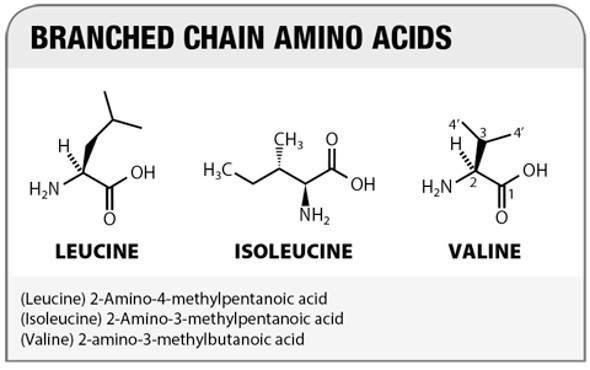
Image Source: Bodybuilding.com
BCAAs fuel your skeletal muscles during training, which can help give you the edge you need to push your limits. Supplementing with BCAAs helps preserve your stores of glycogen—the primary fuel your muscles use for energy production. This means your body has a reliable energy source to tap into while you work out, which can keep you going. Plus, abundant glycogen stores keep your body from breaking down muscle protein for energy instead. That’s why BCAA supplements are a win-win for your muscles—they help sustain and safeguard them. That’s potentially more energy, more reps and more gains. —GNC.com
One of the easiest ways to help you get more out of your daily gym sessions is consuming BCAAs, whether in your everyday food consumption or with supplementation. They are most effective when consumed just BEFORE, DURING or AFTER your next gym session, workout or any physical activity.
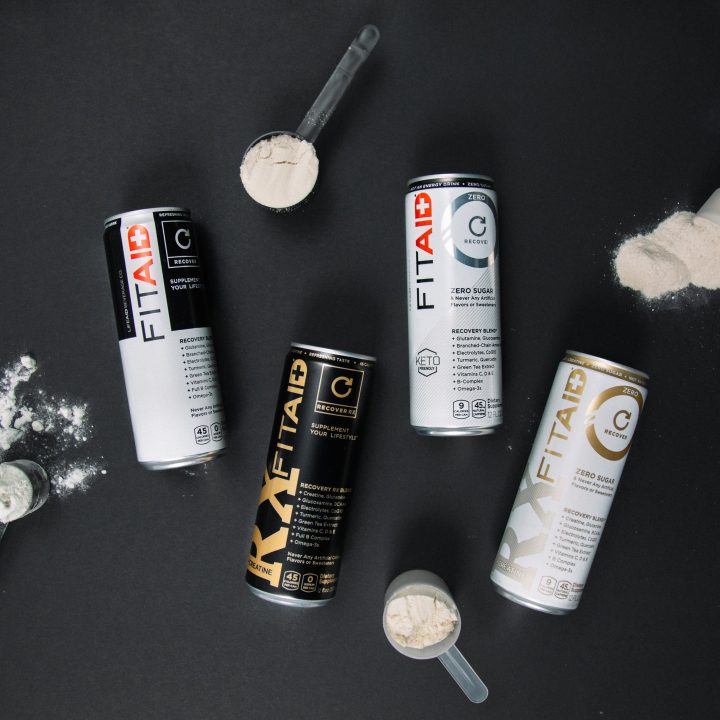
BCAAs are an ingredient in all four of the LIFEAID Recovery Blends shown above:
(75mg Leucine, 37.5mg Isoleucine, 37.5mg Valine)
FITAID
FITAID RX
FITAID ZERO
FITAID RX ZERO
> > > Live well.
You’ve probably heard of BCAAs or Branched-Chain Amino Acids if you’ve ever stepped foot in a gym/box or hung around fitness enthusiasts or athletes. But what do BCAAs actually do? Do you really need them? And if so, when should you take them? We’re here to help you break down the ABCs of BCAAs! The […]
Last month, the Buttery Bros. (Heber Canon & Marston Sawyers) traveled to sunny southern California to crush some waves & WODs with Brooks Laich and a ready-as-ever, Games-bound Sara Sigmundsdóttir. Check out their photo journal from the weekend below, then watch the Buttery Bros.' full episode below — brought to you by FITAID ZERO, your new zero sugar Recovery Blend, still made with only the good stuff!
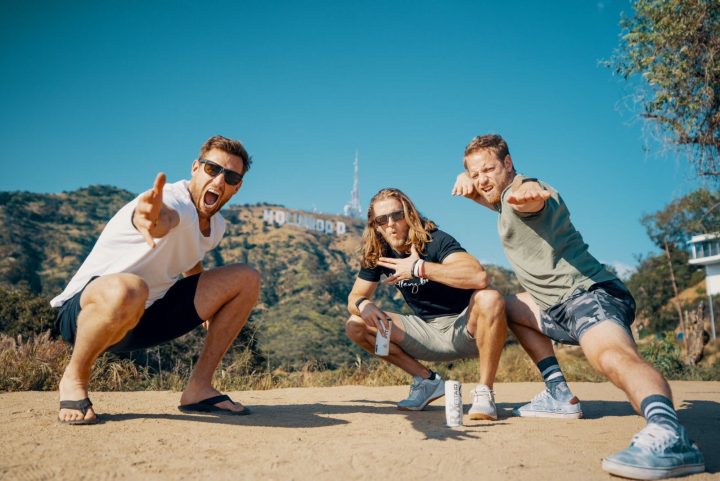
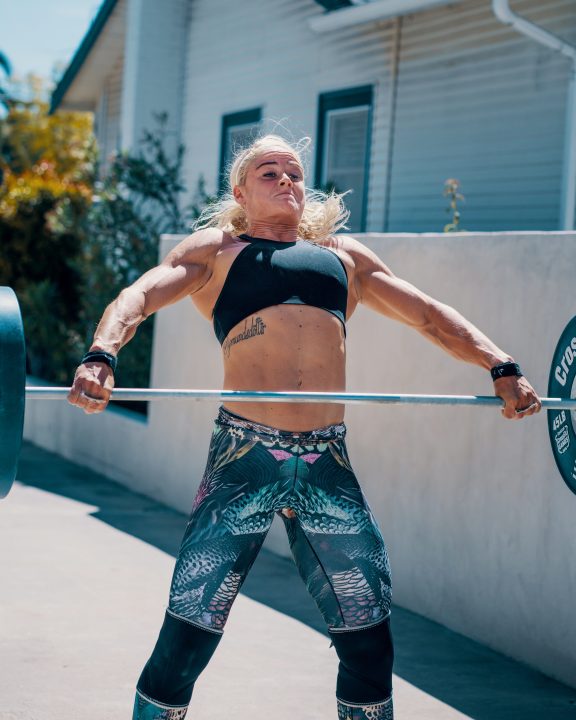
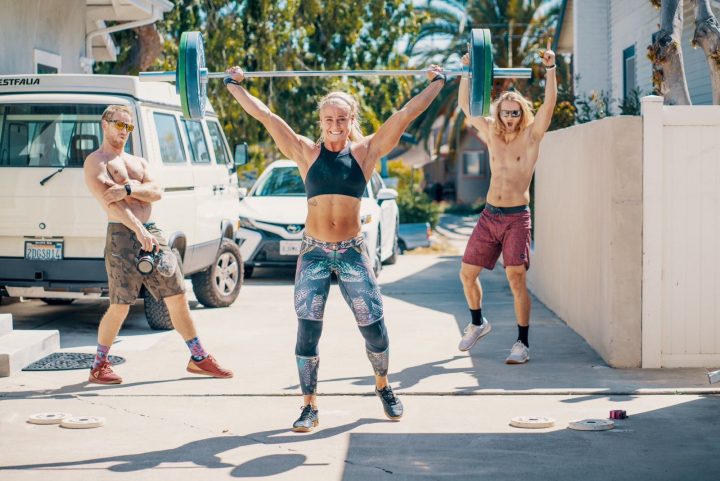
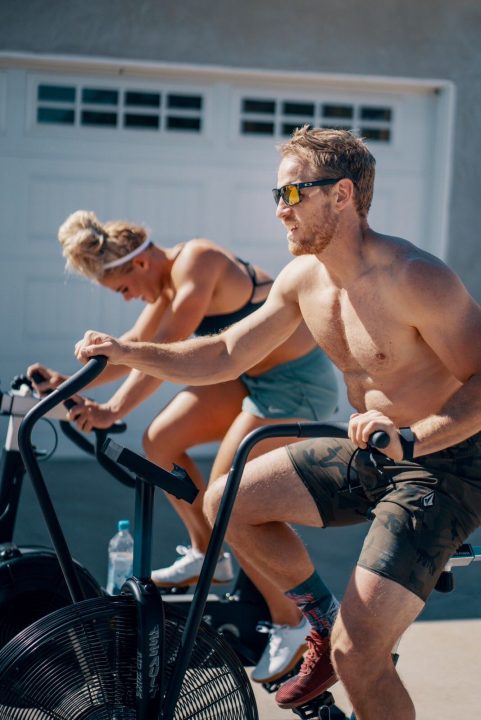
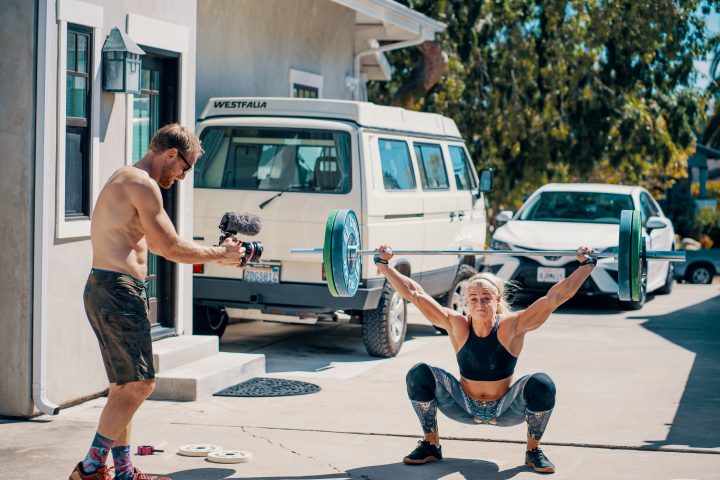
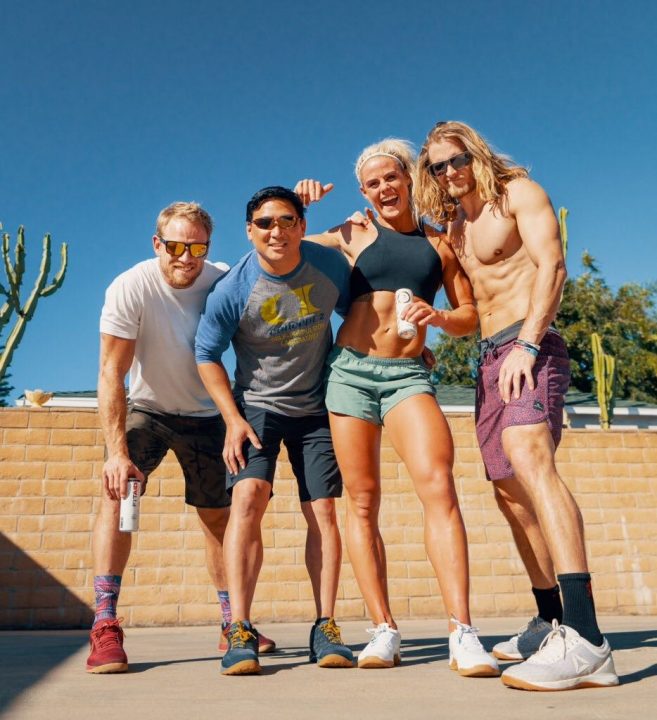
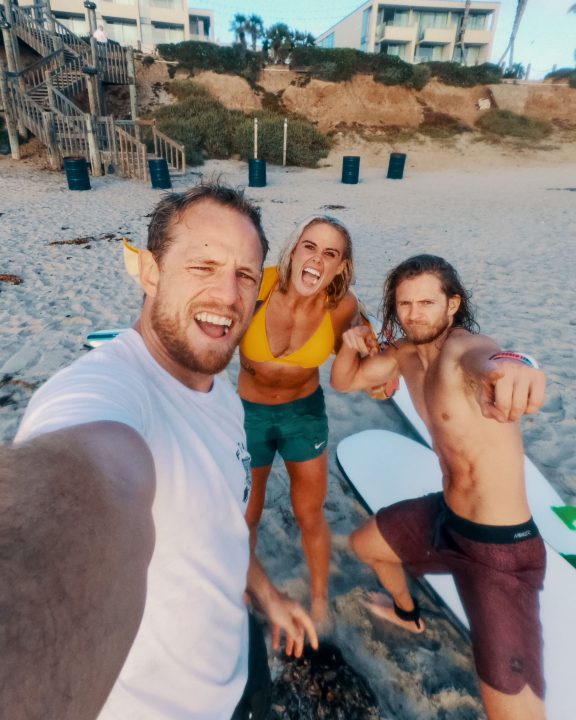
> > > Live well.
Last month, the Buttery Bros. (Heber Canon & Marston Sawyers) traveled to sunny southern California to crush some waves & WODs with Brooks Laich and a ready-as-ever, Games-bound Sara Sigmundsdóttir. Check out their photo journal from the weekend below, then watch the Buttery Bros.’ full episode below — brought to you by FITAID ZERO, your new zero sugar […]
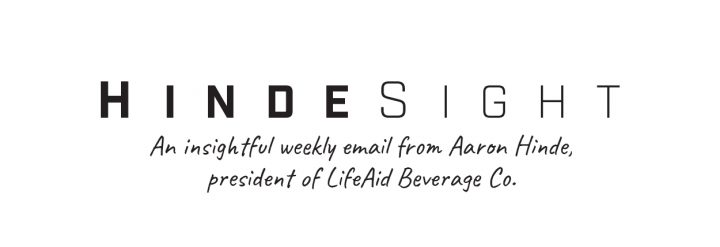
Brute Strength sits down with Aaron Hinde to talk about risks, following your passion, and starting a successful business. (53:02)
Listen to the full podcast episode here.
![]()
. The Terminator Disagrees With Having a “Backup Plan” Arnold Schwarzenneger shares his thoughts on why having a backup plan (Plan B) is a bad idea. Watch the video here. . Creating Value in Your Life & Business Brute Strength sits down with Aaron Hinde to talk about risks, following your passion, and starting a successful business. […]

"What we're gonna talk about tonight is gonna bring it to the next level, I promise you," says Hinde, co-founder and president of LIFEAID Beverage Co. in Santa Cruz, California, as he shares the steps it took to build a company from $0 to $1M dollars in annual revenue and succeed both in business & life. (51:23)
![]()
. Study Raises New Concerns Over How Energy Drinks Might Affect Veterans With PTSD Many veterans have experienced the side effects of high-caffeine energy drinks in order to stay awake during training and combat. Unfortunately, experts are now saying, “Anything over about 400mg of caffeine a day could lead to insomnia, rapid heartbeat and anxiety.” […]
"It's important that we all do our part every day to help give back and protect Mother Earth from the litter and trash that all-too-often lines our streets and park trails," said one team member.
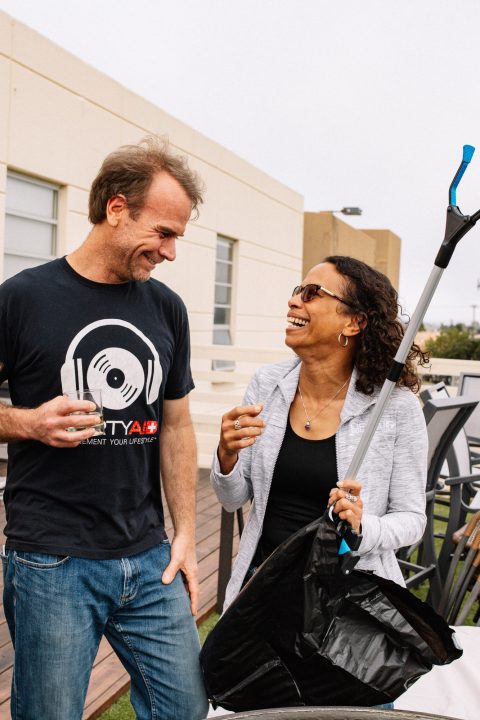
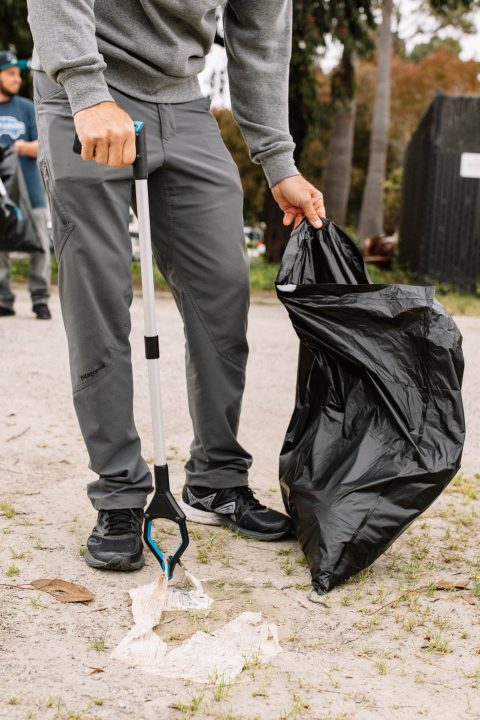
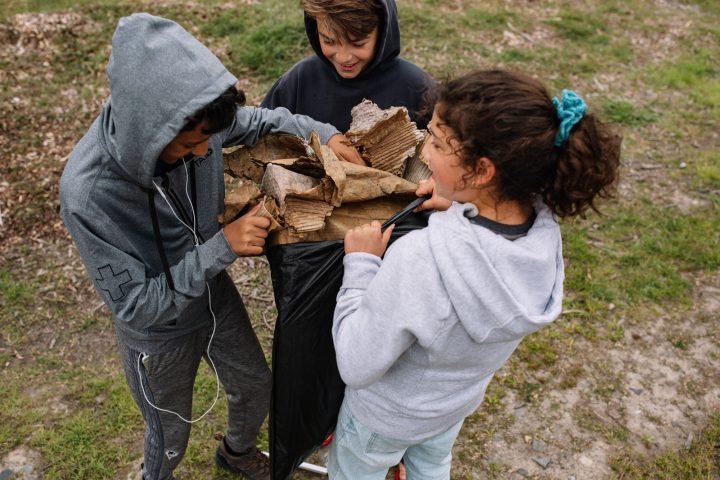
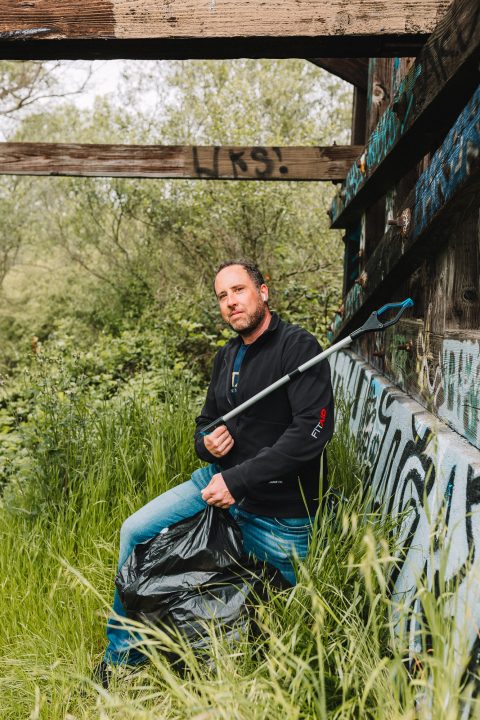
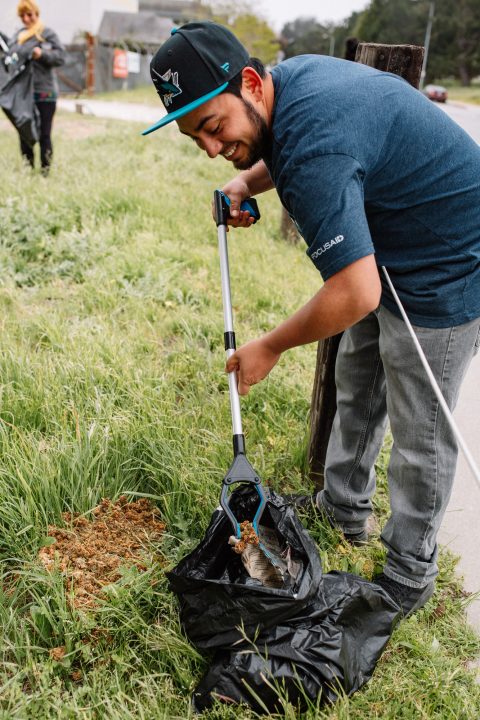
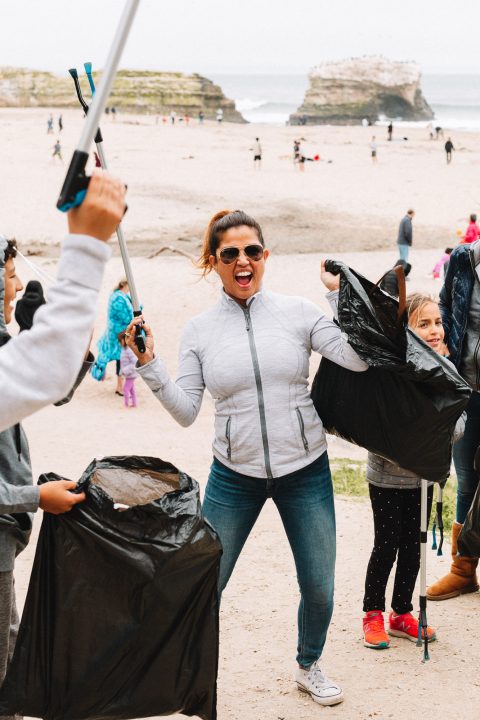
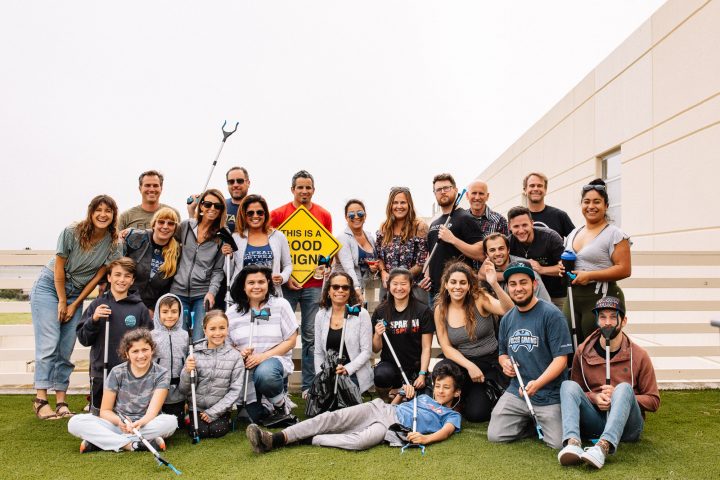
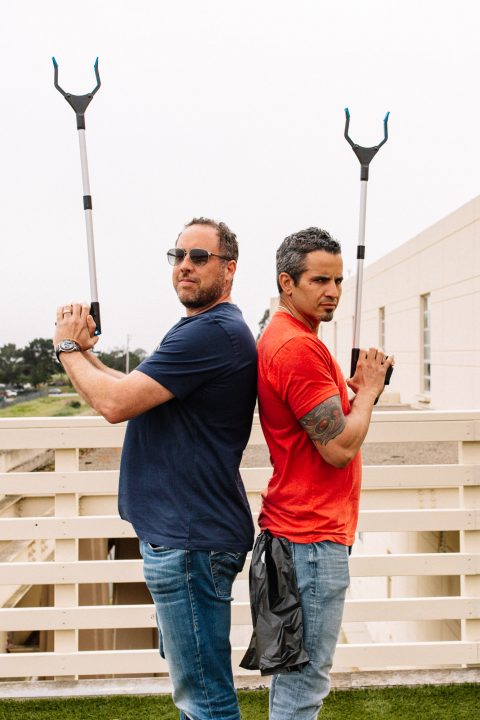 Co-founders Orion Melehan & Aaron Hinde led the charge for LIFEAID Beach Clean-Up Day.
Co-founders Orion Melehan & Aaron Hinde led the charge for LIFEAID Beach Clean-Up Day.©Above photos courtesy of LIFEAID in-house photographer Abby Clayden. All rights reserved.
> > > Live well.
The LIFEAID Beverage Co. staff took to the streets and beaches of their local community in Santa Cruz, California, this past Friday, April 19, in honor of Earth Day. With trash bags and grabbers in hand, the crew walked the 3-mile loop to the beach area from their office headquarters in the Old Wrigley building […]

As a CEO and successful entrepreneur, Aaron Hinde shares his #1 tip for optimizing execution and getting your team noticed amidst all the other white noise.
![]()
. ENTREPRENEURSHIP: “It’s like a man riding a lion. People look at him and think: This person’s really got it together! This person’s brave. And the person riding the lion is thinking: How the hell did I get on a lion, and how do I keep from getting eaten?” —Toby Thomas, CEO of EnSite Solutions, […]
At BevNET Live Summer 2019 on June 12 and 13 in New York City, we’ll sit down with the company’s co-founders, Aaron Hinde and Orion Melehan, to explore how the company is using its deep roots in Crossfit culture to experiment with and expand its product set.
Since we last spoke to LIFEAID at BevNET Live in 2016, the company entered traditional brick-and-mortar retail, raised capital, released a number of new products and now has its sights set on c-store and mainstream retailers. In 2018 alone the company reported a 169 percent increase in sales and is aiming to triple its retail presence to at least 18,000 doors this year, including Walmart, Whole Foods, Kroger, and Sprouts stores.
Behind LIFEAID, FITAID, FOCUSAID, PARTYAID, GOLFERAID, and most recently IMMUNITYAID, the company continues to develop products aimed at niche target demographics and specific use cases. This talk will give BevNET Live attendees insight into how they use subcultures like Crossfit to activate their user groups.
Along with all star speakers like Melehan, Hinde, and others, attendees will also take part in networking and sampling opportunities, as well as offerings like the Beverage School startup session on June 11, and the New Beverage Showdown pitch competition.
Early registration savings are coming to an end! The early registration deadline is next month on Friday, April 26th. Register now to save $200 per ticket.
If your company is interested in generating additional industry exposure, sponsorship opportunities are still available.
Additional information can be found on the BevNET Live Summer 2019 website. Questions about the conference can be directed to Jon Landis.
About BevNET Live
BevNET Live Summer 2019 will return to the Metropolitan West in New York, NY on June 12 and 13. A Beverage School for industry newcomers will also be held on Tuesday, June 11 at no additional cost.
BevNET Live is the premiere event for beverage brands, distributors, service providers, retailers and investors to discuss what’s next for the industry. With the industry’s foremost speakers and our New Beverage Showdown, BevNET Live attracts hundreds of brands to each event.
Source: BevNET.com | Mar. 25, 2019 In a time when food is viewed as medicine, the LIFEAID Beverage Company is capitalizing on the expanding interest in better-for-you functional drinks through rapid innovation. At BevNET Live Summer 2019 on June 12 and 13 in New York City, we’ll sit down with the company’s co-founders, Aaron Hinde and Orion Melehan, […]

CEO Joel Clark will be the first to admit that entrepreneurship isn’t a part-time job. There were struggles, late nights and more than a few setbacks. Despite the challenges, Kodiak Cakes earned a loyal consumer following and a steady streak of retail wins, eclipsing $100 million in sales last year. In this episode, Clark shares his journey — how perseverance, innovation and swimming in the “Shark Tank” played into the evolution and success of Kodiak Cakes.
Is it better to do the right thing and fail or is it better to do the wrong thing and succeed? . How Does a Side Hustle Become a $100M Brand? Ask the CEO of Kodiak Cakes CEO Joel Clark will be the first to admit that entrepreneurship isn’t a part-time job. There were struggles, late […]
Original podcast aired on "Feed Me Fuel Me" | March 17, 2017
We’re excited to expose the elephant with Aaron Hinde (@aaronhinde), owner of LIFEAID Beverage Company and FitAid (@lifeaidbevco & @fitaid). No doubt, one of the most enlightened individuals to join us on the Feed Me Fuel Me podcast. Aaron shares with us his journey from successful practitioner and entrepreneur to brand building business mogul. You’ve seen his products in magazines, at the CrossFit Games, and many other productions such as Rush Club. He continues to grow, not only in business, but in personal development as well. Aaron’s story is in a big way, a testament of how taking care of your people, mastering yourself, and understanding the difference between distraction and opportunity will allow you to create a fulfilled life. Positively productive, Aaron will share with us his routines, his lessons learned, and a few of his experiences that have lead him to where he is now. Find us at the FitAid tent in August as we kick it with Aaron and the FitAid crew at the CrossFit Games in Madison, WI, in August!
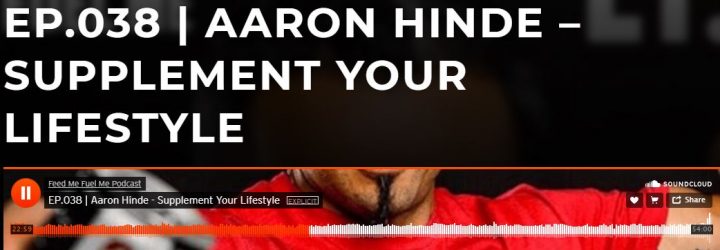
Jeff Thornton: This is episode number 38 of the Feed Me Fuel Me Podcast with our special guest, Aaron Hinde, president and co-founder of LIFEAID Beverage Company. Welcome to the Feed Me Fuel Me Podcast. My name is Jeff Thornton, alongside my co-host, Mycal Anders. Each week we bring you an inspiring person or message related to our three pillars of success, manifestation, business, fitness, and nutrition. Our intent is to enrich, educate, and empower our audience to take action, control, and accountability for their decisions. Thank you for allowing us to join you on your journey. Now let's get started.
We would like the thank our sponsor, FitAid. If you're serious about your performance and recovery, go with FitAid. FitAid is the perfect pre and post workout supplement product. If you're dragging pre workout, FitAid contains natural ingredients to give you that boost and pick me up you need, without the jittery effect. If you're looking for recovery after your workout, FitAid has branch chain amino acids, or BCAAs, L-glutamine, L-arginine, vitamin C and D3, glucosamine, turmeric, COQ10, and raw, organic agave to accommodate the glycogen window and provide your body with a complete and clean recovery. Be sure to give them a try at lifeaidbevco.com, your local gym, or a grocery store near you.
Mycal Anders: Hey. What's going on, guys? Welcome to episode 38 of the Feed Me Fuel Me Podcast. [Myke 00:01:30] Anders here with my co-host, Jeff Thorton.
Jeff Thornton: What up?
Mycal Anders: Today we've got the extreme pleasure of having Aaron Hinde with us, owner of LifeAID Bev. Co. As most people know you, the owner and creator of FitAid. What's going on, man? Thank you for joining us today.
Aaron Hinde: Myke, Jeff, thanks for having me, guys. Appreciate it.
Jeff Thornton: Yeah. Thanks for joining us, brother. It's nice to have you on. Heard a lot of great things about you.
Aaron Hinde: Oh. Thank you.
Mycal Anders: Aaron and I met last year at the Barbell Mastermind with Mike Bledsoe, Doug Larson, [Chris 00:02:07], and it was an awesome meeting of the minds. It was life changing for me and my business. I had the opportunity to sit down with Aaron at one of our breakout sessions, and he really got me hip to game as far as what a quality referral program actually looks like and gave me some action items to implement immediately as a result of the mastermind. I want to extend a personal thank you to what your guidance has given me and my business in the last year, but on top of that you've got quite the story yourself, man.
You made a very critical move some years ago when you dropped your practice as a chiropractor to launch LifeAID and the FitAID project. For the folks listening right now who don't know who you are and what you got going on, can you kind of give us the Cliff Notes of your story and your evolution to where you're at right now?
Aaron Hinde: Yeah. Absolutely, Myke. I appreciate it, and as you know, I value our relationship. I was immediately attracted to you when we first met, because I could tell you were an implementer, someone that didn't just look at things theoretically, but took actions. Congrats on you, and your success, and this podcast. This is awesome, you guys.
Mycal Anders: Thanks, man.
Aaron Hinde: I've been a serial entrepreneur I would say from the earliest days and had some interesting businesses, some of which didn't really work out, but you know, I think as any entrepreneur knows, it's not something that happens over night, and everything's a learning process. Learned a lot over the years. I was a kind of very successful solopreneur five years ago. For 10 years I owned my own sports chiropractic clinic here in Santa Cruz County. That's what really got me introduced to CrossFit, because I was actually in Scotts Valley, where CrossFit Headquarters is at, the media headquarters and used to see some of the higher ups there. Then they started sending in some of the athletes, and so I started. I stepped into my first CrossFit gym, CrossFit North Santa Cruz, in, gosh, probably 2004 or 5, something like that.
Mycal Anders: Wow.
Aaron Hinde: You know, a few years ago. That's where I ended up meeting Orion, my business partner at LIFEAID here. We used to have some free time on our hands, so we'd golf a little bit, you know, once a week. Orion's an accomplished house DJ. I love house music, so we started going to Burning Man together. That's really what sparked it all. We had a very personal relationship, and with my background in sport nutrition and his background on the financial side we really made a great team. You know, we launch LIFEAID.
What people see today in FitAid and the LIFEAID line is quite different than how it all started. It actually started as a supplement company and then evolved to a beverage company, and even from an artwork perspective and everything has really evolved. I think that's one of the keys as an entrepreneur in each of our journeys is that not that we're always making the right decisions, but we're constantly moving forward. That's been big for us over the last five years now that we've been evolving, and moving forward, and really playing the long game and focused on the long game. It's finally paying off.
Jeff Thornton: That's awesome. What was it to make the transition for you from a supplement company to a beverage company? Was there something that you saw in that niche?
Aaron Hinde: Yeah. I'm 41 now, so I grew up in the NoDoz days, if you know what NoDoz are. They're this little energy pills people used to take to stay awake half the night if you had to study for a test or something. I saw the launch of energy drinks and the evolution there. We thought if supplements in pill form, kind of pre-packaged, condition specific supplements in pill form were the way to go, then NoDoz would be a billion dollar company and Redbull wouldn't exist. We all know that it's the exact opposite. People were attracted to the lifestyle branding associated with Redbull, so we knew that beverages were more congruent with lifestyle, where supplements in pill form are just strictly functional. We wanted to be functional and lifestyle driven.
Jeff Thornton: That's interesting.
Aaron Hinde: Ignorance. Oh man. I was making really good money and didn't realize how good I really had it as a solopreneur. I mean, I averaged about 25 hours a week of actual time in the practice. I took every Friday, Saturday, Sunday off. I didn't have one year in 10 years where I grossed under $350,000. It was a sweet set up, even by really any standards, but I was always driven that I was attracted to something bigger, something more. I mean, in my whole career as a chiropractor I probably treated 5,000 patients in those 10 years, but now we're affecting millions of people every month in a positive way.
Part of that was part of my journey. I needed that experience in how to run a successful small business, how to build a referral based business, how to directly communicate one to one with my customers to make this transition and help make this company successful. There's nothing that I've had success, like I said, failure, even the failures, where I haven't learned and moved forward. They were all necessarily in my journey, and I'll have many more challenges to come that will continue to progress my evolution as a business person and an entrepreneur.
Mycal Anders: It's interesting that your timeline is in, just as of late, a 10 and a 5 year increment. They say that it takes 10 years to have an overnight success.
Aaron Hinde: Yeah.
Mycal Anders: That's kind of where you guys are at now. If I'm not mistaken, you guys have doubled in revenue the last three years, have doubled every year over the last three years?
Aaron Hinde: Yeah. We've pretty much doubled or come real close to doubling every year since inception.
Jeff Thornton: Wow.
Aaron Hinde: Some years quite a few more times we've tripled or quadrupled. Yeah. We're in that rapid stage growth phase. I think a couple core tenants to that, it's interesting when I'm speaking with my mentors or successful entrepreneur. I think there's certain tenants that all successful people know that are true that aren't really talked about, because they're just truisms, but it may not be totally apparent to someone just starting out or someone that's been struggling.
You know, the number one thing is that you must have a completely kick-ass product or service. You can't be delivering mediocre training, or mediocre programming, or mediocre online products, or physical products, or whatever it is you're selling. If it's mediocre, the world is too small. There's review sites. There's all this going on, all this constant feedback that we're getting on products and service, that the ones that are shitty just aren't going to make it. Tenant number one is that if your product or service is not head over heels better than the competition, you shouldn't be getting into it. You know? I'd say that's truism number one.
Number two, how you do anything is how you do everything. So many people think, and I'm still learning this, but oh, you're going to bring your A game to a certain aspect to your business, but in another aspect it's falling apart. You're dominating business, but your home life sucks, or your home life's great, but you're stuck at a dead end job, or you're not progressing spiritually, or whatever it is. One realization I think I've had over this last year is you can be kick-ass in all aspects of you life. Nothing's holding you back from achieving that. It doesn't have to be one sided. It doesn't have to be, quote unquote, out of bounds. You can dominate every aspect of life. I think that's what we were created to do. We were created to have that approach to all aspects, yet too often we put only focus in one area of our life and let other areas slip.
Mycal Anders: Right. Right. To that point, what are some of the mechanisms that you have in place that keep you in balance. Is it a time management thing predominantly? Where do you prioritize things so that you have that balance across the board, between business, family, and personal time?
Aaron Hinde: Yeah. Well, the main thing that keeps me in balance is my wife, because if I get too out of balance, she lets me know. You know, the key to not having that talk, that the guys out there would know that I'm talking about that are entrepreneurial, because I'm sure we've all had it at one point or another. The biggest part is being present. When you are present in the moment on what's going on it doesn't matter if you're spending five or ten minutes a day with your kids versus two to three hours a day. It depends on what the intention is with that time. How connected are you with that individual?
Look. The bottom line is that life is about relationships. You know? Those relationships are being nurtured by being in tune and attentive to what's coming out of that person's mouth, to their body language, to their energy, and letting your innate intelligence take over and develop and nurture those relationships. We call it, here at LIFEAID, making deposits to the emotional bank account. As long as you're consistently making deposits to those emotional bank accounts you can afford to make a withdrawal once in awhile, and it's still okay. You still have a very positive balance. Right? If we're not making those deposits and then we start having some withdrawals, we get in trouble. Making sure every emotional bank account has more deposits than withdraws, and that's relevant to personal, and spiritual, and professional, and so on, and so forth.
I think also the other important thing is always play the long game in all of those aspects of life. Don't think short sighted. Play the long game, because even if you die tomorrow, playing the long game still yields better results in the short term than anything. Always play the long game. Too many, especially entrepreneurs, when you're young, and naïve, and short on cash it may be easy to be tempted by taking shortcuts, but that's never the way to do it.
Mycal Anders: Sure, man. It's a very interesting point that you brought up, because you express the quality over quantity, because I think too many people, especially in the entrepreneurial space or when you're pursuing something greater than what you currently have, equate balance to time served, as opposed to the quality of the time that you actually have in one aspect versus the rest of them. Too many people express being out of balance, because they're at work 8 to 16 hours a day, and only home for dinner, and then going straight to bed with their family.
They consider themselves out of balance, because of the lopsidedness of the hours at work versus the hours at home, when in actuality if you have a quality 5 to 10 minutes at home with your spouse, and your kids, or whatever, going back to the intent of it all, that's where the power is, and that's where you're able to, in a minimal amount of time, make a huge emotional deposit into that bank account that you were just talking about. At the same time, even though you're not home the majority of the day, you're still getting the biggest bang for your buck, so to speak, in the other aspects of your life while you're committed to making things happen on the business side.
Aaron Hinde: Yeah. The consequences of not being present in the time that is allotted (at home) has negative byproducts in as much as then when you're at work for that 14, 15, 16 hours instead of being present for your clients or your business and crushing that, all you're thinking about is how you're a total F-up at home and how you should be at home more. Right? Now you're dis-servicing two areas, not just one.
Mycal Anders: Right. How long did it take you to figure that out? I know for me personally when I opened the gym I had to get a coach to help me figure out that the time versus the quality spent, they're not synonymous. If you focus on the quality of time spent, it far outweighs the time. How long did it take you to figure that out?
Aaron Hinde: I'm still figuring that out. You know, that's the truth. It's like I don't have all the answers. I mean, I see a lot of the answers with clarity. I think any part of truly transforming or evolving to our next state of being and awareness has to do with understanding things, kind of mentally processing, understanding that, yeah, that sounds like that is a truism, and then talking about it, having it become part of your vocabulary, and then taking action upon it. Then when you take action upon it long enough and it yields results it becomes very visceral. Then you just know it to be true, and it's just how you do things.
I do things today, like what that looks like is much different than 5 years or 10 years ago, from how I wake up, how I start my morning, what that morning ritual looks like, how I approach people with abundance instead of scarcity, my attitude, my mindset, my recognition that everything is happening for a reason. Everything that I say or do or that happens in my life is steering me, or pulling me I should say, to make a right turn instead of a left. That has eternal consequences as a result. Being much more in tune and open to what is my calling? What am I here for? Let me be true to that. When I'm true to that I don't have stress in my life. There's not resistance. When I'm fighting what I know to be right for myself and for my path, that causes resistance. That causes a lot of gray hairs, like you can see. I've got some war wounds ... right here. It causes undo stress.
Aaron Hinde: It's essential. It's necessary. It's essential. I don't know of anyone that I would consider successful that doesn't have mentors, not one person. I talked about a little with this evolution that happens in all of us at the different aspects and stages of our life, from personally, and professionally, and spiritually, and physically, and so on, and so forth. CrossFit's a great example of that. It can take someone at their worst physical condition and put them in their best physical condition in a very short amount of time. It's powerful. Having mentors, I think what attracts us to any given mentor at any stage of our life is they are a living, breathing example of that next evolution of where we know we need to go. Right? There's no better way to get to that than see how people that are already there are living.
Mycal Anders: True.
Aaron Hinde: At the same time I think we have an obligation to be reaching behind us at people that aren't quite as along the progression as we are in various aspects of life, and bringing them up with us, and helping them. We have that same obligation. That's why when you find the right mentors that click it's not efforts for them. There's no resistance. They understand that they're giving back, just as someone gave to them. It's a never ending cycle of abundance of knowledge being passed from basically generation to generation, not necessarily linked to your family. That's what's great.
Mycal Anders: What are some of the qualities that you personally look for in mentors? Do you have specialty mentors, like in sports you have a kicking coach, a linebacker coach, and then a head coach who oversees everything, or do you pretty much have a specific head coach who kind of guides you through all the phases for a specific season of your life? Where are you at with the coaching process in terms of what you seek in mentorship right now?
Aaron Hinde: Yeah. I definitely have specialty coaches for various aspects. I mean, you know, my priest, who I go to on religious and spiritual issues, is not the same person per se that maybe guides me in marketing. What is consistent amongst all of my mentors and coaches is the focus on the who, not the what. What I mean by that is who they became when they grew up, not what they became. It's not a matter if they became a marketing coach, or a priest, or a whatever, but the type of person they are. I always look for people of the highest integrity that are completely ethical and transparent. I'm not looking for saints. Everybody has made mistakes, but again, it's a process. We're evolving, so I look for quality people from the inside who happen to specialize in X, Y, Z area.
Mycal Anders: Right on.
Jeff Thornton: That's so interesting, because as we started diving more into coaching, ... were talking, because I just hired my first business coach, and we were talking about just standard education where somebody came up to me and they said, "I paid $10,000 for my business coach." To me I looked at that investment and said, "Look what I ..." You mentioned they've already been to that point of success where I see, "Okay. This is the next level I want to reach," but then you have people who are doing the traditional school system, and they looked at that, and they came up and said, "You know, that's expensive for paying for a coach." They failed to look inside and say, "I'm paying three times as much as you are in a semester to get information that I may not use in my life." How do you sort of structure your thought process and teach people around you that mentorship is the way to go, and coaching is the right step if you want to level up in ever aspect of your life, whether it's business or personal?
Aaron Hinde: Yeah. I mean, just to real quickly touch on the education piece, I'm in no way anti-education. I got nine years of post high school, four years of undergrad with economics, another year with science, and then four years of chiropractic college, and $200,000 in student loan debt, which thank god I just paid off a few months ago.
Jeff Thornton: Congratulations.
Mycal Anders: Congratulations.
Aaron Hinde: Yeah. Thank you. Thank you. Which is a huge burden lifted off your shoulders, and not to mention the opportunity cost of those nine years. What could I have been doing instead of in school for those nine years? Again, everything happens for a reason. I wouldn't be here if I didn't have that background. Now, when I have my discussions with my kids they're very aware of the cost of school, what they can get from free podcasts like this one, from a 10 or $12 book, from a $2,000 weekend seminar, from a 10, 20, 30 thousand dollars coach. Right? Exponential value. You know? You're right.
I think it's this weird, little hang up sometimes that people have that are, quote unquote, educated from the traditional sense like, "How could you spend that much on this?" You're like, "Well, what are you talking about? You spent four years, six years, eight years, nine years of your life. How much did that cost?" You know? I have literally learned more from my coaches, and mentors, and weekend seminars, and podcasts, and books, millions of dollars worth of education for a fraction of the cost. There's no harm in doing both.
I mean, I don't have a hang up with going to college, if that's what you're called to do. There's a lot of benefit from networking, and the social benefits, and that kind of thing, but as far as real education and implementing things, that's what you're going to get working in a business. I'll take someone with four years of experience in an industry over a four year degree over that subject matter any day of the week. You know? Those are the type of people we hire. We've got a lot of educated people here, but we've got people educated with street smarts, and that's what really matters.
Jeff Thornton: I think that where the rubber meets the road in terms of formal education versus the school of hard knocks, seminars, podcasts, and experiential education is number one, what you stand to gain. In the formal education system you're learning a lot of the technical, but not necessarily a lot of the application of that knowledge. On the other side, when it comes to the investment of a mentor and stuff like that, where I see the immediate difference is when you invest in a coach or a mentor you're given immediate action steps to implement.
It's really up to you how fast you get that return on investment, whereas in the traditional education, and I'm speaking from a mentorship standpoint, as we take undergrads in exercise and wellness through our internship program at CrossFit PHX, if I have them write a program, they can technically show me how to turn a housewife into a supermodel, but then we step out on the floor and I'm like, "All right. I need you to tell me what's wrong with their squat and how to fix it," and they look at me like a deer in the headlights.
That's where the rubber meets the road. Your true education, from what I've found years and years later, post masters degree and all that good stuff, like you said, it took that to get me here, so I definitely appreciate that education. It comes from the application. Then, like you said, teaching those behind you and helping them progress past ... so that they don't have to necessarily stumble over the same hurdles that you did.
Aaron Hinde: Yeah. I mean, where the rubber meets the road in both a traditional education sense and what we'll call alternative or what basically everyone's doing today is really in implementation. I mean, I have a couple acquaintances that have listened to every podcast of significance there is, have read every book of significance there is, could quote in and out of everything that they should do, but two pp lin particular that I'm thinking of, they never take any action. You know? That's why lawyers and CPAs tend to make horrible entrepreneurs, because they overanalyze and never take action. You could be in that boat and be privy to kind of the new way of learning.
Where the rubber meets the road is Zuckerberg was in traditional college until he took action, and that action ended up making him drop out, from what I understand, but still, he took action. You can take action in a traditional system or an alternative system. The nice thing is with the new system it's a lot cheaper in both time and money typically. You're getting immediate feedback, so you can take action, like you said, on something today and get results tomorrow. That's the great thing about the new media for testing ideas and advertising and seeing if something's going to get traction or not.
Mycal Anders: Do you think that society is in line with that, that not necessarily the traditional education system is bound to crumble, but do you think that inevitably it's going to have to revamp its structure to keep up with the alternative side?
Aaron Hinde: Yeah. I mean, it's all economics. People in California out here are freaking out about the environment, and we're all going to be underwater here in a few years. I said, "Look. The economics drive everything. They'll always drive everything. As soon as it's cheaper to have alternative energy than fossil fuel, guess what? We all switch to alternative energy. It's already happening." You know, with less people theoretically enrolling in a traditional sense and getting alternative education for cheaper it's a matter of time before ... Information is free. What's the setting, the traditional college setting providing you? It's providing you with information. Well, information is free now. What can you learn in that classroom that you couldn't learn for free with a YouTube video, or lecture, or online?
The model has to change. I think the economics are going to drive it to change from basic supply and demand. There'll still be demand for ... I could take a paid piece of content and the exact same free piece of content. I'm always going to get better results on the paid piece, even when the information is identical, because when people pay for something psychologically they've already made the first step in committing to it. There's going to be some type of a hybrid model that evolves out of this that's much more reasonable from a fee base, that doesn't make people indentured servants to pay off their student loans, like I was, for the rest of their lives. If it wasn't for LIFEAID, I'd still be paying on these student loans until I was 60 years old at a $1,000 a month. Do you believe that? It's ridiculous.
Mycal Anders: That's crazy. What's so interesting, going back to you talking about the paid advertisement versus the free advertisement and getting more value, or the free content versus the paid content, talking in a mastermind sense, I imagine you go to several masterminds a year. Am I correct?
Aaron Hinde: Yeah. Quite a few.
Mycal Anders: Do you find it more beneficial or do you find that you surround yourself with more high level thinkers that pay to go to seminars, rather than to all, like a free seminar? Have you found more value in paying for those?
Aaron Hinde: Yeah. Look. When I was a chiropractor I was very influential I guess in the community and kind of worked on the who's who. I went to all the Chamber of Commerce, and Exchange Club, and all those things that a lot of small business owners go to. Right? Here's the problem with that setting. You poll the 50 people in a Chamber of Commerce room and say, "Hey. Raise your hand right now if you're here to sell something." All 50 people put their hand up. Then ask the next question, "Who's here to buy something?" Nobody puts their hand up. Talk about an issue with supply and demand, but that's the environment most of us are trying to market in? It's ridiculous.
When you're going to a high level event that people have paid big money to it's a much different attitude and atmosphere. People at that level understand that in order to receive we must first give, and so they're coming forward with their best practices, what's working. They're not coming from a scarcity mindset. Therefore, the quality of conversation, the quality of deals that happen is on a whole nother level, but unfortunately you have to screen out kind of the bottom dwellers to get to the real cream there.
Mycal Anders: I think that's a very interesting point, because you and I wouldn't have this relationship had it not been for that mastermind that you and I both invested in.
Aaron Hinde: That's right.
Mycal Anders: When you and I met I was on the fence as to you or your competition, who was going to serve my community best? You know, your competition has a lot of people out there doing a lot of door to door, B2B footwork in and around our community, but what I found in that mastermind, it allows you to instead of going through three layers to get things done, you and I had a simple conversation. You told me everything I needed to know about FitAid and the value that it brings, but above and beyond the product, knowing you was hands down the differentiator. I got to meet the man, so to speak, the decision maker. Even though you have an extremely quality staff beneath and around you, if I need something to get done right now, because of that mastermind I can just shoot you a text and it gets done. You know?
Aaron Hinde: That's right.
Mycal Anders: That's the value of that investment is the networking potential, but at the same time, prior to doing the deal and me purchasing a product from you, we had two or three discussions about how to make CrossFit PHX better from the customer service standpoint. You gave me quite a bit before I ever purchased anything from you.
Aaron Hinde: Yeah. I think that comes back to what we were talking about earlier and playing the long game. Life is driven by relationships, and sometimes you think that, "Oh. I'm so far behind. My competitor's got twice as many members as me," or, "They're doing this," and, "They're doing that." It's easy to get caught up in that jealousy scarcity game, but if you don't get caught up in that and you control your thoughts ... That's the biggest challenge for most of us is we let our minds control us, and we don't control our minds, but if we control our thoughts, recognize that, and change our thought process, and focus on delivering value first and foremost, nurturing these relationships over the long run, then what happens over the long run is a transformation will ultimately take place. It's one of those truisms. You know? It's we have to avoid short-term thinking, that short-term mentality and always focus on nurturing, and developing relationships, and providing value.
Jeff Thornton: Where is that mindset? I really love that you have the abundance mindset. Where does that come from for you? Is it something that you continue to mature as you've read and grown in your life, or does it come from your childhood?
Aaron Hinde: You know, a little of both. My childhood, as nurturing as it was, I still heard things like money doesn't grow on trees and so much of that stuff that ... I mean, I came from a family with six brothers and sisters, seven kids. Even though my dad made some decent money ... He was in a fee for service model and a lot of kids to feed. I never flew on an airplane until I went to college was the first time. There was some of that scarcity mindset I think growing up, like most kids have, but that's not something I want to pass on to my kids. I have to be very conscious if I find myself in saying something in a scarcity mindset. Thankfully I've got Orion, my business partner, and my wife to call me out, and I encourage people to call me out.
It's been a progress. It's part of that evolution. It comes from books and the right mentors. I don't know anybody that I would consider successful ... When I say successful I don't mean they make a ton of money and they drive a nice car. That may be one aspect of it, but when I say successful I mean well rounded in their relationships with their significant other, and their kids, if they have any, with their employees and team members, that their product or service has with their consumer base and community. All of these aspects are factoring in as my definition of success. I don't know one successful person that does not come from an abundance mindset.
Jeff Thornton: Mm-hmm (affirmative). It's true. It's the honest truth.
Mycal Anders: Would you say that your inner circle, so to speak, kind of mimics what you look for in mentors, in terms of who you surround yourself with on a consistent basis?
Aaron Hinde: Yeah. Absolutely. Absolutely. I always try to surround myself or I'm attracted to people that are at least on level or multiple levels ahead of me in this journey of life in at least one aspect of life. Right? Any time I know that I engage with them I'm progressing. Again, that's the key. One of the keys, another truism is keep moving forward. You know, we cannot afford to be stagnant. I remember talking to my priest years ago. I'm Greek Orthodox, and my priest years ago, and he said, "The spiritual struggle is like a salmon swimming up stream. As long as it continues to swim upstream, it'll reach it's destination, the spawning ground, but even if it takes a short rest and just stops swimming, what happens? The current takes it back the other way." We always have to be moving. We always have to be struggling, recognizing that as the book I just read, The Obstacle is the Way, the obstacle is in fact the way. Don't look at these challenges in life from a negative perspective. Look at them as necessarily.
Aaron Hinde: Well, the number one I always recommend is Cialdini's book, Dr. Robert Cialdini, Influence. If you haven't read it, it's a must read. There's so much that happens in our personal relationships where we're making unintended withdrawals from the emotional bank account. A quick example of that is I helped someone move over the weekend. Everyone knows moving's a pain and lifting furniture. They call me up on Monday and say, "Oh, Aaron. Thank you so much. You're my only friend that showed up. Thank you for helping me move." The worst thing I could say to them would be, "Oh. No problem," because they've put me up on a pedestal, and I shut it down like, "Oh. No problem," or, "I'd do it for anybody." That wasn't the intent of my response to that compliment, but subconsciously I've taken a withdrawal from that bank account, instead of a deposit like it should have been made. I think a lot of human interaction is misinterpreted, and especially now that a lot of it is happening away from one to one communication. It's happening digitally through email, and texting, and that kind of stuff. Cialini's book is a must read.
I really enjoyed Ego is the Enemy this year, which was a good read for me. You know, always struggling kind of on the spiritual side to not be driven by pride or overly a sense of accomplishment, keeping that in check, that was a good one, Ego is the Enemy. Gosh. The third I'm going to give a recommendation, because I know it's good. I haven't even read it yet. It's sitting on my desk. It's Tools of Titans by Tim Ferriss.
Mycal Anders: Oh yeah.
Aaron Hinde: The caliber of the guests he has on the podcasts and that this is a synopsis of all the takeaways, I'm sure it's going to be awesome. I'm looking forward to it.
Jeff Thornton: Tim Ferriss, any book that he produces, I think, like you said, it's a must read. For him to drop Tools, I heard that thing is as thick as an encyclopedia ...
Aaron Hinde: It is. Yeah.
Jeff Thornton: They say it was more like the books you put on the table. You sit back and just read a couple passages a day.
Aaron Hinde: Yeah. I've met Tim a couple times, and he seems like a legit guy and is really creating a unique tribe. You know? Reminds me a lot of CrossFit actually in a lot ways, his tribe and the way his tribe responds. He's done a great job and as far as I can see is a quality human being.
Mycal Anders: Yeah. We have a couple of people in our circle that are in that book right now, not like depicted in the book, but reading it right now. Whatever The 4-Hour Work Week did for people, this takes that to the next level.
Aaron Hinde: Oh. Awesome.
Aaron Hinde: It's a challenge, and it's a constant challenge. I mentioned head talk, specifically negative head talk. We all have to deal with that from previous programming. You're not good enough, whatever it is, that head talk, in order to come from an abundance mindset you have to change the head talk. Step one is not just wishing it to go away, because we all know that's not the way it works, but recognizing it when it's happening in your head. You go, "Ah. I know what you're doing. I've heard this story before," and kind of laughing at it, recognizing and laughing at it, discounting it, going, "That's not accurate. That's not accurate. I'm not going to let myself think like that." You start catching it frequently enough, then all of a sudden you stop that negative head talk, and then you can start replacing it.
It's like a vacuum was created. Now you can start replacing it with abundance. Then you start to act on that. Even though you may not totally believe it, you start to act with an abundance mindset. Maybe I leave a 25% tip instead of 20%. Right? I'm like, "I'm okay." I still made my bills the next month. Start to have those different practices, and with that over time I think the thought process can evolve, and you start coming at things from a more abundance perspective. You got to start with your thoughts.
Jeff Thornton: Sort of to keep that mindset of your thoughts, of creating your reality, what are some daily practices or rituals that you do from the time you wake up to the time you go to sleep that keep you going, keep you consistent?
Aaron Hinde: Yeah. I like this one. Some of it I took from my buddy Hal Elrod's Miracle Morning book, and I pieced it together from various sources. I'll typically wake up around 6:00 AM, and immediately I'll drink a full glass of water. Then I'll spend five minutes and fill out the Five-Minute Journal, which I've found to be an excellent tool. Basically in the five minute journal you're writing down three things that you are grateful for every day, three things that would make today great, and then one self affirmation. Okay? It's really a great mindset tool to get you appreciating not only the big things that are happening, but a lot of the little things, and then setting your intention for the day, which helps manifest itself.
After that I'll take a shower. At the end of my shower I'll do a full 30 breath cycle of Wim Hof breathing. I only do one cycle, because I do it in the shower. In case I got light headed or passed out, I don't want to crash through the bathroom, but I'll do Wim Hof breathing. I'll hold my breath for about a minute. Then when I'm getting towards the tail end of my breath hold I'll slam the hot water off and I'll cold plunge for about 30 seconds to a minute. That's kind of on the Wim Hof side of things. Yeah.
Then I'll usually make a fresh, green smoothie with some of the fruits that I've picked from our garden over the year and from our orchard and start the day off with my commute in. I drive along the ocean after I drop my son off, and I'm usually listening to a podcast of Audible. Then I get to the office, and kind of review my journal that I take with me everywhere, and align that with the intentions I set in the morning, and get to work.
Jeff Thornton: Beautiful.
Mycal Anders: That's awesome man. I'm starting to ask everybody this question, because I just find it so phenomenal. Mike Bledsoe actually re-introduced me to the Perfect Day Exercise. Have you done that yet, or do you do it regularly?
Aaron Hinde: I have done it. I've done it several times. I don't do it regularly, but it is a phenomenal exercise. I mean, we just had our last team meeting of the year this morning with our entire team. One thing we do, that we've done all quarter, when we set our quarterly goals is we write a futuristic kind of State of the Union, and we read it every meeting. It goes like, "Wow. It's the end of 2016, and it's been a fabulous year. At the beginning of the quarter we had challenges with ..." and it goes into extreme detail on every aspect of the business, and it's basically a perfect day for each quarter. It's amazing how much of that ... Every quarter we do it we hit 95% of the goals that are basically outlined in that document. It's powerful, putting words on paper, visualizing that coming true, and taking consistent steps over time on a daily basis to get you closer and closer to those goals.
Mycal Anders: Awesome, man. Awesome. Well, I know you're busy, and you got a lot going on. I want to leave you with two questions, and I want you to answer them on any level, mental, physical, spiritual, what have you. Give us one thing that you do each and every day to feed yourself, kind of get the ball rolling and put you in the right mindset for your intention for the day. Then give us something that you do each and every day to fuel you and keep that fire burning into the wee hours of the night, before you turn it off and shut your eyes at night.
Aaron Hinde: Uh-huh. Really a tool to get me going, if you haven't looked into the Wim Hof breathing, I'd highly recommend your audience do so. When I do the Wim Hof and then do the cold plunge it's very euphoric. I forgot to mention I also do the Bulletproof Coffee in the morning. I set aside five minutes of prayer every morning and meditation, but that Wim Hof breathing really has just been a game changer for me and just kind of jumpstart my day. You know, some days you're like, "Oh. I'm dragging a little bit," or you have your cup of coffee and it doesn't quite feel like it's kicked in, that mental block. It just starts my day off, where I feel very in the zone and alert.
Then to wind down my day ... I live up in the mountains, in Santa Cruz Mountains, off the grid. I don't have a ... tie in. I got my own well. Just coming home, and looking up at the stars, and breathing the clean air, and really resetting myself that I'm very thankful for everything that I have in my life. Just coming back from Thailand and just seeing some of the poverty and the garbage everywhere, and just being thankful, like, "What a great, clean, beautiful environment I get to live in."
Jeff Thornton: That's awesome, man. I really love your mindset and appreciate your time today. Where can the community go and support anything that you're doing personally, in your business, any initiatives that you have going? We'll link this all up I the show notes, but where can we go support you in anything that you have going?
Aaron Hinde: Yeah. I appreciate it. All of my personal, social handles are just my name, A-A-R-O-N H-I-N-D-E, Aaron Hinde. Then if you haven't checked out our website, please do so, lifeaidbevco.com. We're really rolling out this year into a lot of conventional channels, so we'll be in all of the Whole Foods in April, all the Sprouts by March, five divisions of Safeway. If you can find us at your local box, please support us in the retail environment. Check us out on social media. We have individual social handles for all of our lines. On social media real quick, if you've got a business, always focus on value added content first and foremost, and pitching should be secondary. I'd recommend a 90/10 or 95/5 percentage value added content to pitching. Too many businesses out there just pitch, pitch, pitch, without adding value first.
Mycal Anders: That's beautiful, man. Hey. We really appreciate you being with us today. Like we said when we opened the show, Matt, I really value, we value, your friendship and your time, man. Thank you so much.
Jeff Thornton: Thank you so much.
Aaron Hinde: All right, Mike, Jeff. I appreciate it, you guys.
Mycal Anders: Definitely.
Mycal Anders: For those of you guys listening, make sure you support all that Aaron has going on with FitAid and LIFEAID. Big ups of the progress that you're blasting into 2017 with. As always, we truly appreciate you exposing the elephant with us. Thank you for allowing us to be a part of your journey, as we're ever thankful for being a part of yours. Until next time, guys, Feed Me Fuel Me.
Jeff Thornton: That'll do it for today's episode with our special guest, Aaron Hinde. If you want to check out everything Aaron has going and his company, LifeAID Bev. Co, go check out the full show notes at feedmefuelme.com. Also, be sure to connect with us on social media, including Facebook, Snapchat, Instagram, and Twitter @feedmefuelme. We would love to hear from each and every one of you.
...
If you found this episode inspiring in any way, please rate, comment, share, and subscribe, so we can continue on this journey together. Also, be sure to share it with your friends and family on social media, including Facebook, Snapchat, Instagram, and Twitter, or any other social platforms that you use. We really appreciate you spending your time with us today and allowing us to join you on your journey. We would love to hear your feedback on this episode, as well as guests and topics for future episodes. To end this episode we would love to leave you with a quote Jim Rohn. "Motivation is what gets you started. Habit is what keeps you going." Thank you again for joining us, and we will catch you on the next episode.
> > > Live well.
Original podcast aired on “Feed Me Fuel Me” | March 17, 2017 We’re excited to expose the elephant with Aaron Hinde (@aaronhinde), owner of LIFEAID Beverage Company and FitAid (@lifeaidbevco & @fitaid). No doubt, one of the most enlightened individuals to join us on the Feed Me Fuel Me podcast. Aaron shares with us his […]
Article by Andrew Jacobs | The New York Times | March 14, 2019
What do these ads featuring Joe Camel, Kool-Aid Man and the maniacal mascot for Hawaiian Punch have in common?
All three were created by Big Tobacco in the decades when cigarette makers, seeking to diversify their holdings, acquired some of America’s iconic beverage brands. They used their expertise in artificial flavor, coloring and marketing to heighten the products’ appeal to children.
That tobacco companies once sold sugar-sweetened drinks like Tang, Capri Sun and Kool-Aid is not exactly news. But researchers combing through a vast archive of cigarette company documents at the University of California, San Francisco stumbled on something revealing: Internal correspondence showed how tobacco executives, barred from targeting children for cigarette sales, focused their marketing prowess on young people to sell sugary beverages in ways that had not been done before.
The archive, known as the Truth Tobacco Industry Documents, was created as part of a settlement between major cigarette companies and states that were seeking to recoup smoking-related health care costs. The researchers published their findings on Thursday in the medical publication BMJ.
At a time of mounting childhood obesity, with nearly a third of children in the United States overweight or obese and rates of type 2 diabetes soaring among adolescents, the study’s authors said it was important to chart how companies created and marketed junk food and sugary drinks to youngsters.
“We have a chronic disease epidemic but we don’t understand the vectors very well,” said Laura A. Schmidt, an author of the study and a professor of health policy at U.C.S.F. School of Medicine. “These documents help us understand how food and beverage companies, using strategic and crafty tactics, got us hooked on unhealthy products.”
R.J. Reynolds and Philip Morris no longer own the drink brands and declined to comment, as did the companies that later acquired the brands.
Experts said tobacco executives had a keen appreciation for the importance of earning customer loyalty at an early age. Jennifer Harris, who studies corporate marketing at the Rudd Center for Food Policy and Obesity at the University of Connecticut, said introducing sweetened beverages to young children can have lifelong implications.
“If a kid gets used to drinking Kool-Aid instead of water, they are always going to prefer a sugary beverage,” said Ms. Harris, who was not involved in the study. “And the advertising creates positive associations with these products in the minds of children.”

Before its atomic red, sweet bouquet came to dominate school cafeterias and birthday parties nationwide, Hawaiian Punch was sold as a cocktail mixer for adults and came in only two flavors. After purchasing the brand in 1963 from the Pacific Hawaiian Products Company, R.J. Reynolds rebranded the beverage for children, according to company documents. Executives expanded the repertoire of flavors to 16, and discontinued Amber Apple, a product favored by mothers, after taste tests with children found they preferred Red Apple.

The centerpiece of their marketing efforts was Punchy, a cheeky pugilist splashed across schoolbook covers, Sunday newspaper comics, drinking cups and branded wristwatches. In the 1960s and ’70s, Punchy made frequent appearances in television ads that touted the drink’s generous supply of vitamin C, but made no mention of the prodigious sugar content that kept children coming back for more. (Even today, Hawaiian Punch contains five percent fruit juice and a single serving has 14 grams of sugar — more than half the recommended daily limit for children.)
In 1973, RJR World, the company’s in-house publication, extolled Punchy’s “instant eye-appeal” and described him as “the best salesman the beverage has ever had.”

Ad from the late 1960s, with Punchy extolling the drink's wholesomeness.
That same year, R.J. Reynolds introduced pop-top eight-ounce cans — “perfect for children,” according to company documents — that provided an alternative to the mammoth 46-ounce metal canisters that had to be punctured by a grown up, armed with a can opener.
By the 1980s, the brand was pulling in $200 million annually, with growth fueled by the introduction of child-friendly juice boxes (“A handy little carton that comes with its very own straw,” promotional material said.) as well as Hawaiian Punch as a shelf concentrate, a frozen cylinder and powders that could be mixed with water.
Dr. Schmidt, one of the study authors, said the marriage of tobacco companies and sweetened beverage brands was about more than marketing. Cigarette companies were frequently introducing new flavored products, and many of the chemicals that went into cherry-scented chewing tobacco and apple-flavored cigarettes found their way into children’s drinks. A 1985 company report attributed the success of Hawaiian Punch to R.J.R. scientists who had created “a beverage formula starting from our knowledge of flavors we already produce or have in our flavor library.” The goal, the report said “is to leave people wanting more.”


Flush with cash, and with the prospect of government regulation mounting, cigarette companies accelerated their purchase of food and beverage companies. In 1985 Philip Morris, impressed by R.J.R.s success with Hawaiian Punch, applied the same marketing techniquesto Kool-Aid, which it acquired when it bought General Foods, according to company documents.

For decades, Kool-Aid had been sold in powder form as a cheaper alternative to soda, with ads aimed squarely at penny-pinching housewives. Philip Morris quickly shifted gears by halving its advertising budget for mothers to $10.7 million, and more than doubling the amount spent on children’s marketing to $6 million, according to company figures.
“We’ve decided to focus our marketing on kids, where we know our strength is the greatest,” a company executive boasted at an industry conference in 1987. “This year, Kool-Aid will be the most heavily promoted kids trademark in America.”
The mascot, Kool-Aid Man, was an anthropomorphized glass pitcher who was fond of crashing through walls and fences, sending terrified adults into goofy pratfalls.
The following year, Philip Morris introduced a loyalty swag program, Wacky Wild Prize Warehouse, modeled on the Marlboro Country Store, which rewarded frequent smokers with branded camping gear, clothing and poker sets.
In 1992, a Philip Morris marketing analysis described Wacky Warehouse — a collaboration with toy makers like Nintendo and Mattel — as “the most effective kid’s marketing vehicle known.” By then, Kool-Aid had expanded into a dizzying constellation of frozen pops, bursts, jammers and shots that came in dozens of flavors like Great Bluedini, PurpleSaurus Rex and colors that changed when mixed with water.

The success with Kool-Aid persuaded Philip Morris it could apply the same marketing magic to Tang, the 1950s-era powdered drink that people of a certain age will recall as the beverage supposedly favored by astronauts. In 1996, Philip Morris, which inherited Tang from General Foods, declared the brand “as dead as the space program.”
The solution: Rebrand Tang for young adolescents.
The company unleashed a wave of television ads that positioned Tang as an “extreme orange breakfast drink for today’s extreme tweens.” The ads featured orangutans on motorcycles and sleepy teens zapped awake by a glass of sugary Tang. The company forged marketing arrangements with Sports Illustrated and Schwinn bicycles and created a loyalty program to rival the Wacky Warehouse.
Tang ended up in the portfolio of the snack food giant Mondelez International, which owns such brands as Oreo, Cadbury and Nabisco. Tang may have lost some of its pizazz in the United States, but it still has broad appeal overseas, especially in the developing world, where it has been creating new flavors to appeal to local tastes. According to the company’s website, Tang brought in $900 million in 2016.
♦ ♦ ♦
About the Author: Andrew Jacobs is a reporter with the Health and Science Desk, based in New York. He previously reported from Beijing and Brazil and had stints as a Metro reporter, Styles writer and National correspondent, covering the American South. @AndrewJacobsNYT
Article by Andrew Jacobs | The New York Times | March 14, 2019 Researchers combing through archives discovered that cigarette makers had applied their marketing wizardry to sweetened beverages and turned generations of children into loyal customers. What do these ads featuring Joe Camel, Kool-Aid Man and the maniacal mascot for Hawaiian Punch have in common? All […]